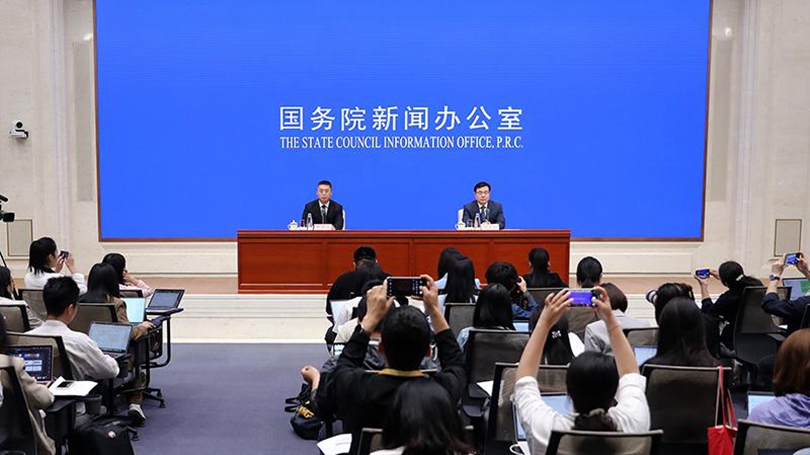Market News International:
Given the recent agreement between China and the U.S. in Geneva to reduce tariffs at a significant pace, do you expect a surge in exports to the U.S. over the next few months? And what is your outlook for trade performance for the rest of the year? Thank you.
Fu Linghui:
Thank you for your questions. China-U.S. trade and its impact on overall foreign trade are of great concern to everyone. In April, the external environment changed dramatically, increasing pressure on foreign trade. However, China's foreign trade overcame difficulties and maintained steady growth, demonstrating strong resilience and international competitiveness. From January to April, the total value of China's imports and exports of goods increased by 2.4%, accelerating by 1.1 percentage points compared to the first three months. In April, the total value of China's imports and exports of goods increased by 5.6%, with exports growing by 9.3%, maintaining rapid growth.
Specifically, foreign trade exhibited several features. First, the growth of imports and exports with ASEAN and Belt and Road partner countries accelerated. In April, despite a decline in trade with the U.S., overall foreign trade diversified, and accelerated imports and exports with ASEAN and Belt and Road partner countries strongly supported the continued growth of foreign trade. From January to April, the total value of imports and exports between China and ASEAN increased by 9.2% year on year, accelerating by 2.1 percentage points compared to the first three months; and China's imports and exports with Belt and Road partner countries increased by 3.9%, accelerating by 1.7 percentage points. Second, the growth of imports and exports by private foreign trade enterprises accelerated. In the face of external shocks, these enterprises actively responded and effectively coped through market diversification strategies, achieving clear results. From January to April, the imports and exports of private enterprises increased by 6.8% year on year, accelerating by 1 percentage point compared with the first three months, better than the overall foreign trade situation. Third, the export of mechanical and electrical products grew robustly. With the upgrading and development of China's industries, the competitiveness of technologically advanced mechanical and electrical products continuously enhanced, becoming an important growth point for exports. From January to April, the export value of China's mechanical and electrical products increased by 9.5% year on year, higher than in the first three months.
In the context of increased external shocks, China's foreign trade withstood pressure and continued to grow. First, this fact reflects the firm support provided by a solid industrial foundation. China has a complete industrial system. In particular, the manufacturing industry is being upgraded, occupying an important position in the global industrial chain, and gaining strong advantages in international competition. Second, it reflects the ability of the foreign trade industry to quickly adjust and respond. China has been steadily diversifying foreign trade, the ability of foreign trade enterprises to expand markets has been increasing, and these enterprises have shown strong ability to adapt to changes prompted by trade frictions and supply chain disruptions. Third, this resilience also reveals the supportive role of various policies to stabilize foreign trade. In the face of external shocks, various regions and departments have strengthened support for foreign trade enterprises and stepped up export tax rebates, financial support, trade facilitation and other policies, creating a policy environment for enabling the development of foreign trade.
In the next stage, the substantial reduction of tariffs between China and the U.S. will be conducive to the growth of bilateral trade and the recovery of the world economy. At present, the international environment is still complex and severe, and unilateralism and protectionism are on the rise, which has seriously impacted the international economic and trade order and restricted global economic growth. However, the trend of international cooperation for mutual benefit will not change, nor will China's firm commitment to expanding its opening up to the outside world. The diversification of foreign trade is steadily advancing, and policies to promote foreign trade are continuously taking effect, which will support the stable development of foreign trade. Thank you.


 Share:
Share: 




 京公网安备 11010802027341号
京公网安备 11010802027341号